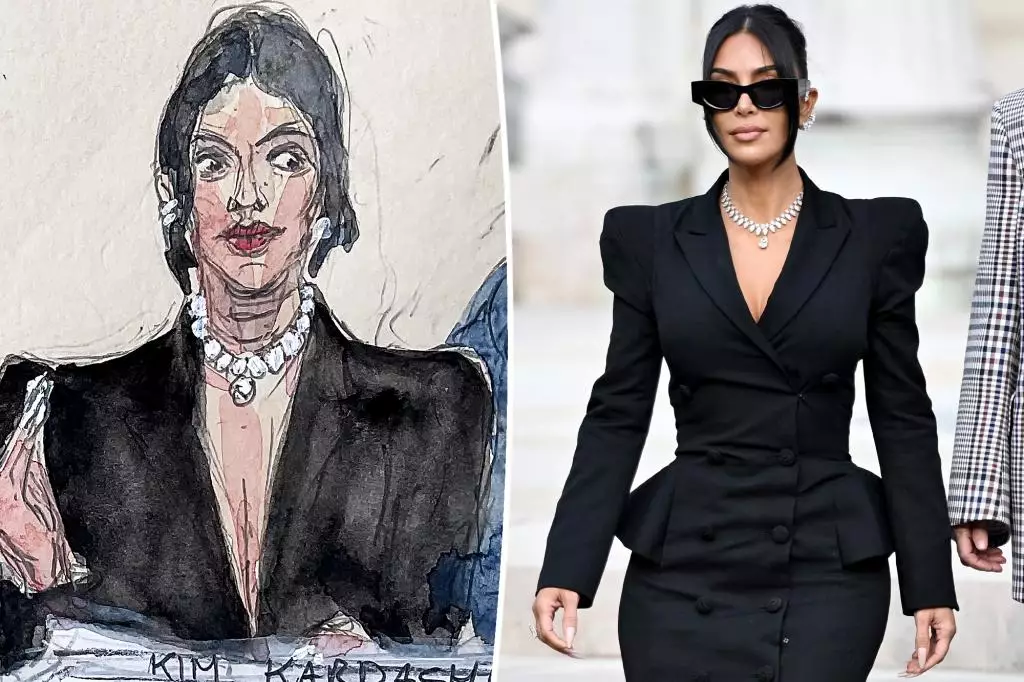In 2016, the glittering world of fashion was momentarily eclipsed by a high-profile crime that could easily be mistaken for a scripted thriller. During Paris Fashion Week, reality star Kim Kardashian experienced a terrifying ordeal when armed robbers infiltrated her hotel suite, ultimately making off with an astonishing $10 million worth of jewelry. This incident not only left an indelible mark on Kardashian’s life but also drew the attention of law enforcement and the public alike. Fast forward to today, and the Parisian court has finally delivered justice, finding key members of the so-called “grandpa robbers” guilty of their heinous acts.
The Verdict and Its Implications
Recently, a Paris court handed down sentences to eight individuals implicated in this audacious heist. Among them was Aomar Aït Khedache, the ringleader, who received an eight-year sentence with five years suspended. While many may assume that such crimes warrant harsh penalties regardless of age, the court opted for a lenient approach owing to the advanced age of many defendants, who were predominantly in their 60s and 70s. This decision raises eyebrows—should compassion for age supersede the expectations of justice when it comes to severe crimes like robbery? It certainly blurs the line between justice and mercy.
A total of ten individuals faced charges related to the robbery; however, two informants who allegedly aided the gang by providing insider information were acquitted. This aspect of the trial highlights the complexities of criminal justice, particularly in high-profile cases where alliances shift, and motives may be muddled. The acquittal of the informants suggests a troubling reality—that not all who collude in crime will face the consequences of their actions.
Kardashian’s Response and the Resilience of Victims
In the wake of the verdict, Kardashian expressed profound gratitude toward French authorities for their pursuit of justice. Her statement served as a testament to her resilience and personal growth following an incident that she described as the most terrifying experience of her life. Emotional wounds, however, do not heal as readily as physical ones. While she is committed to moving forward, one can’t help but wonder how encounters like these shape the psyche of a public figure. Her story underlines the larger narrative of victimization; it reminds us that behind the glamour often lies an invisible struggle for personal safety and mental stability.
Describing the nightmarish details of her ordeal, Kardashian asserted, “I absolutely thought I was going to die.” Such harrowing recollections provide a glimpse into the depth of trauma experienced by victims of violent crime. It prompts a critical reflection on how society often overlooks these psychological effects in favor of mere headlines.
The Role of the Legal System in High-Profile Cases
Kardashian’s ongoing advocacy for justice illuminates a critical aspect of the legal system—the need for reform, particularly in how victims are treated. Her legal team echoed this sentiment in their statements, emphasizing the importance of a fair judicial process. As a celebrity, Kardashian has a unique platform and influence that she willingly uses to push for change on behalf of marginalized victims and the incarcerated seeking redemption. Her journey illustrates the notion that recovery extends beyond personal healing; it may also encompass systemic change.
However, one must question the effectiveness of the existing legal framework when even notorious criminals escape substantial punishment. The leniency shown by the court not only poses ethical questions but also sets a concerning precedent for how similar cases might be treated in the future. Does the system prioritize reformation over retribution, and at what point do we risk failing the victims by prioritizing the age and background of the perpetrators?
Public Fascination and the Unending Spotlight
As we analyze the aftermath of the Kardashian jewelry heist, it’s essential to recognize the way public fascination with such crimes often overshadows the fundamentally human consequences. The glitzy allure of the Kardashian brand, amplified by the dramatic nature of the crime, turns a deeply invasive experience into a sensational story told on television and social media. However, this spectacle diverts attention from the grave emotional toll inflicted on victims, particularly public figures who often find their traumas transformed into entertainment.
The case surrounding Kim Kardashian’s jewelry heist serves as a stark reminder of how celebrity culture, crime, and justice intertwine. It compels us to reconsider our perceptions of justice, trauma, and recovery while also prompting a vital discussion about the intricacies of victimhood and accountability in the legal system. The true test may lie in our ability to look beyond the glimmering surface and confront the uncomfortable truths that lie beneath.

